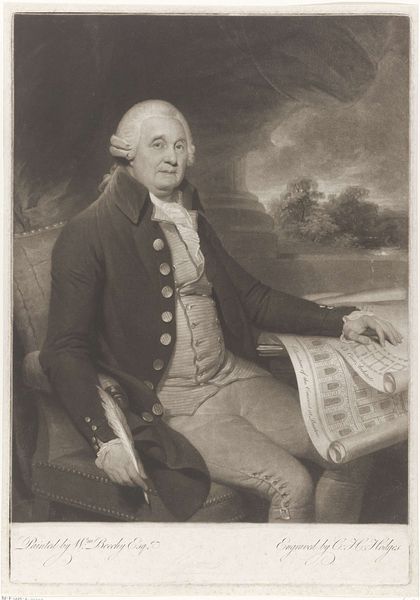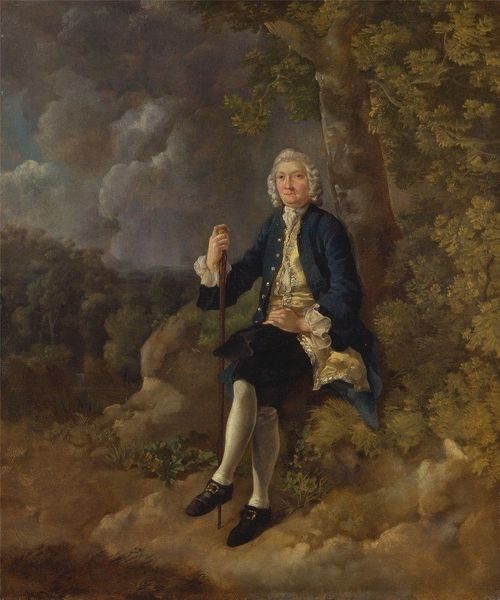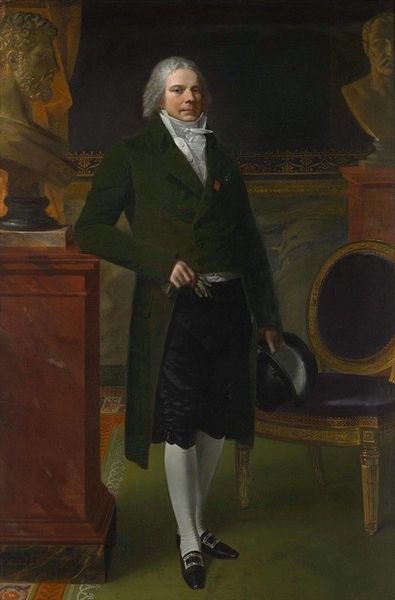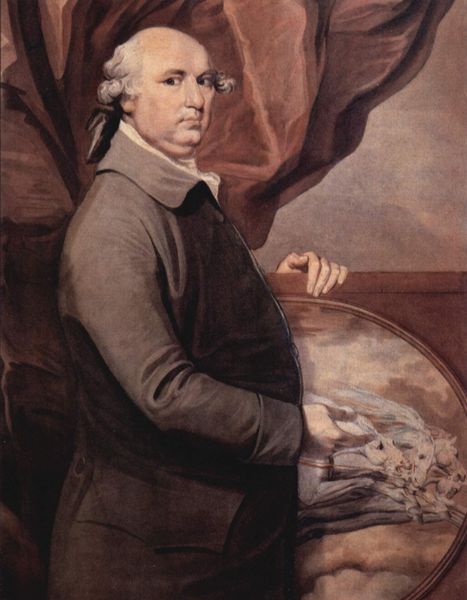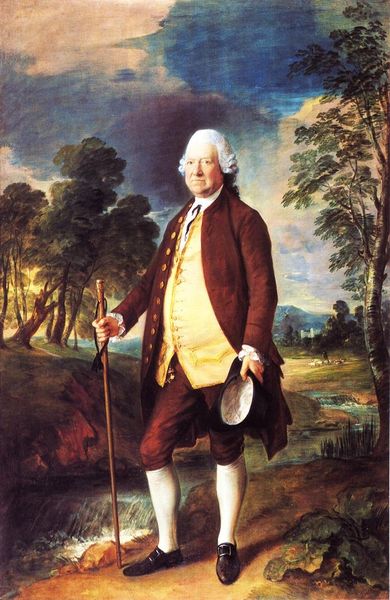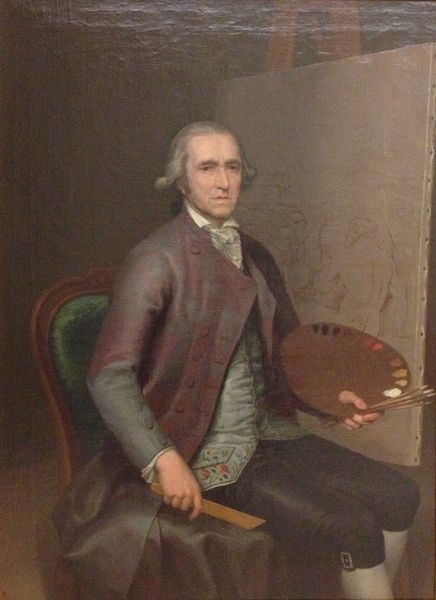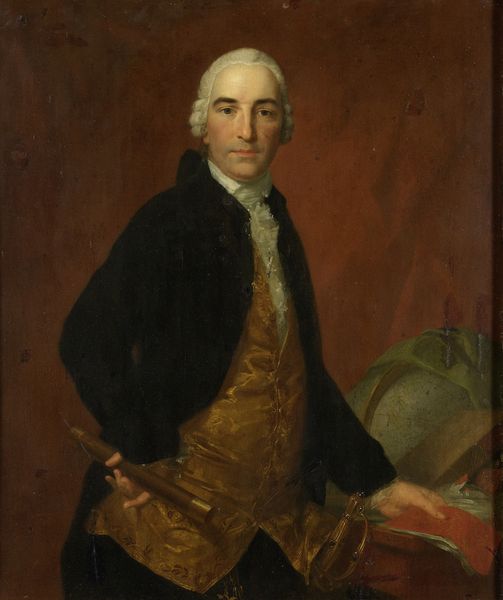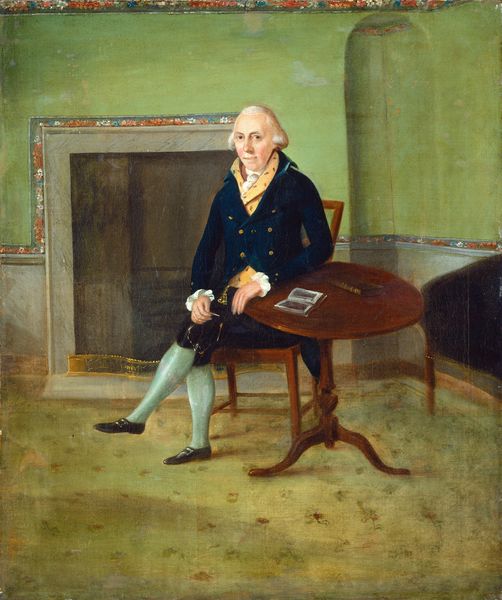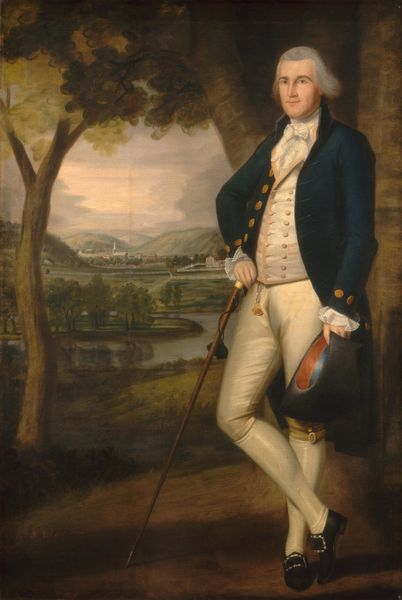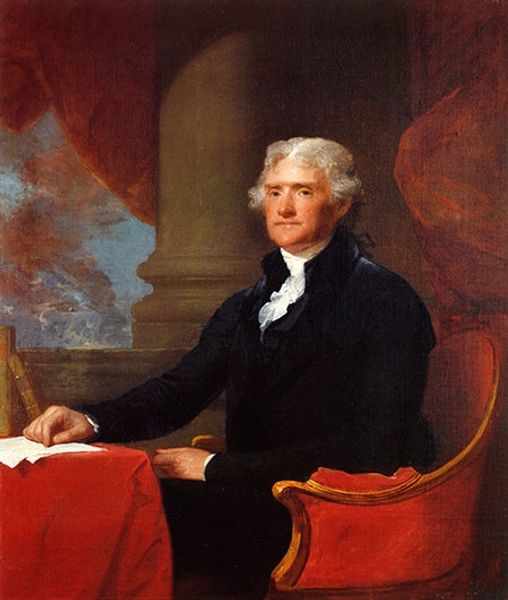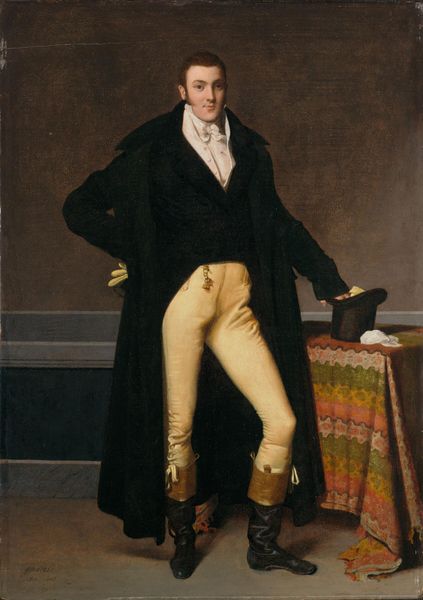
painting, oil-paint
#
portrait
#
neoclacissism
#
painting
#
oil-paint
#
romanticism
#
history-painting
#
realism
Dimensions: 210 x 156 cm
Copyright: Public domain
Editor: Here we have an oil painting of Giovanni Battista Sommariva by Pierre-Paul Prud'hon. The gentleman appears very proper but I find something dreamlike and surreal about the statues looming in the background. How do you interpret this work? Curator: Indeed, Prud'hon has created an intriguing dialogue here. Look closely: we see Sommariva, a powerful figure in Napoleonic France, staged within this idealized, almost theatrical landscape. The setting, while beautiful, feels somewhat… manufactured, wouldn't you agree? The statues, the meticulously arranged trees, even the gentle light—they all contribute to a constructed image of power and cultivated taste. What does it suggest to you about the portrayal of men and power in that period? Editor: Well, it definitely speaks to an attempt to connect oneself with the ideals of classicism. Almost a display of intellectualism or even moral virtue through these references to antiquity. Curator: Exactly. But consider the historical context: France had just emerged from revolution and was entering the Napoleonic era. There was a hunger for stability, a yearning for order after chaos. And the carefully constructed image—the Neoclassical statues alongside Romantic ideals of nature and emotion— served to legitimize the new ruling class by linking it to past empires. Who do you think the painting serves and who does it excludes through this construction of taste and power? Editor: That's a good question. I imagine that it aimed at creating an image of an educated elite and therefore distanced the portrayed subject from, for example, revolutionary ideals that were perceived as chaotic. The average citizen would feel alienated by the imagery and message of the artwork, and therefore excluded from power and social status. Curator: Precisely. Art of this period wasn't simply about aesthetics; it was about establishing and maintaining social hierarchies through a visual language carefully understood by those in power. I found this portrait of Sommariva initially appealing, but unpacking the historical background really added another layer to its analysis. Editor: Absolutely, it gives me a lot to think about!
Comments
No comments
Be the first to comment and join the conversation on the ultimate creative platform.
